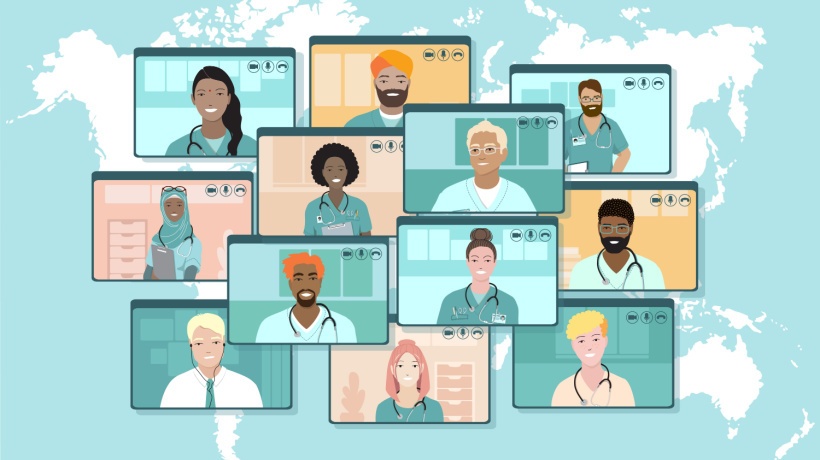How To Close The Healthcare Communications Gap With eLearning
As the healthcare sector struggles to address a staffing crisis by bringing in agency staff or staff from overseas, a communications gap is opening up. In 2015, the UK saw rules restricting the immigration of nurses into Britain lifted in response to shortages of workers across the NHS. As of April 2017, all nursing posts remained on the government shortage occupation list, allowing nurses from outside the European Economic Area that apply to work in the UK to have their applications for nursing posts prioritized. And in the care sector, the use of agency staff has increased by 55% over the past two years.
In Brazil, pressure on the health service forced the government to instigate Mais Médicos (‘More Doctors’), a program to recruit thousands of foreign doctors to work in poor and remote areas. An editorial in the Brazilian scientific publication SciELO raised concerns about the impact of bringing in doctors with insufficient language skills, asking:
How important is the question of language in healthcare?
and pointing to scientific studies indicating that the language barrier is associated with receiving 50% less analgesics after fractures in long bones, with lower adherence to treatment (doing what the physician advised), with 3 times the number of missed follow-up appointments for patients with asthma, with a lower level of patient satisfaction, and with lower rates of explanation regarding possible side effects of medications.
Healthcare Learning Lag
Health services around the world can no longer rely on having a stable core of staff with a common language and an established, shorthand way of communicating with each other. This communications breakdown is having a real impact on the healthcare sector but it is not in a good position to address it – indeed this sector appears to be lagging behind others in every aspect of learning and development.
Nine out of 10 organizations are looking to support their talent management by improving efficiency, fine tuning process, boosting performance, cultivating agility, and influencing culture, according to the Towards Maturity Benchmark report Unlocking Potential. However, when its researchers drilled down to find out what sectors are most successful at achieving these goals, the healthcare sector was less successful than any of the other sectors – finance, IT and telecoms firms, retail, professional services, and even the charity sector. There is a pressing need for the healthcare sector to look at how it can improve language and communication skills to match healthcare competency skills.
Language Barriers In Healthcare Can Impact On Care
In Australia, researchers studying difficulties in patient clinician communication, point out: “Miscommunication in the healthcare sector can be life-threatening. The rising number of migrant patients and foreign-trained staff means that communication errors between a healthcare practitioner and patient when one or both are speaking a second language are increasingly likely”. This research team is working on a protocol for investigating safe and effective communication when patients or clinicians use a second language. In the meantime, some healthcare settings have provided examples of best practice when it comes to language and communications skills.
Hospital Boost Its Language Skills
Speexx worked with a provider of integrated healthcare services primarily to foreign diplomats and the expat community in major Chinese cities. English is the main language of this provider and it wanted to facilitate professional standards in communication among Chinese and English speaking staff and patients. It needed to address a language skills gap between native English-speaking staff and Chinese nurses as well as improving the skills of staff communicating with foreign patients.
The working situation required a blended learning approach. The project was started by testing language skills based on the Common European Framework of Reference for languages (CEFR) to identify employees who would need to participate in the learning program. As a next step, multiple online and off-line meetings were held to get student buy-in to training goals. A bespoke web portal was created in Chinese and English that was integrated into the main website to provide easy access to learning materials to students wherever they were located. More than three quarters of the students improved by three levels on the six-level CEFR proficiency scale and 97% of students reached their training goal, increasing their professional vocabulary considerably.
Healthcare Communications: Making Healthcare Safe And Effective
Learning and Development professionals have made a good start with supporting virtual language and communications training in healthcare settings, but there is more to do. Almost half (43%) of Learning and Development professionals in all sectors responding to the annual Speexx Exchange survey agreed with the statement that they have ‘Established or embedded
eLearning across the organization – our learning culture is integrated into our everyday work’. Up from only 17% the year before, this appears to represent a major shift. In reality, it is likely to apply to short practical training modules such as health and safety training. There is still much work to be done in embedding language and communications skills within day-to-day workflows if healthcare is to be safe and effective.
Speexx offers a number of free whitepapers that can help organizations develop their strategy for addressing their language and communications gaps. Visit Resources and White Papers.
For more information, visit speexx.com.









